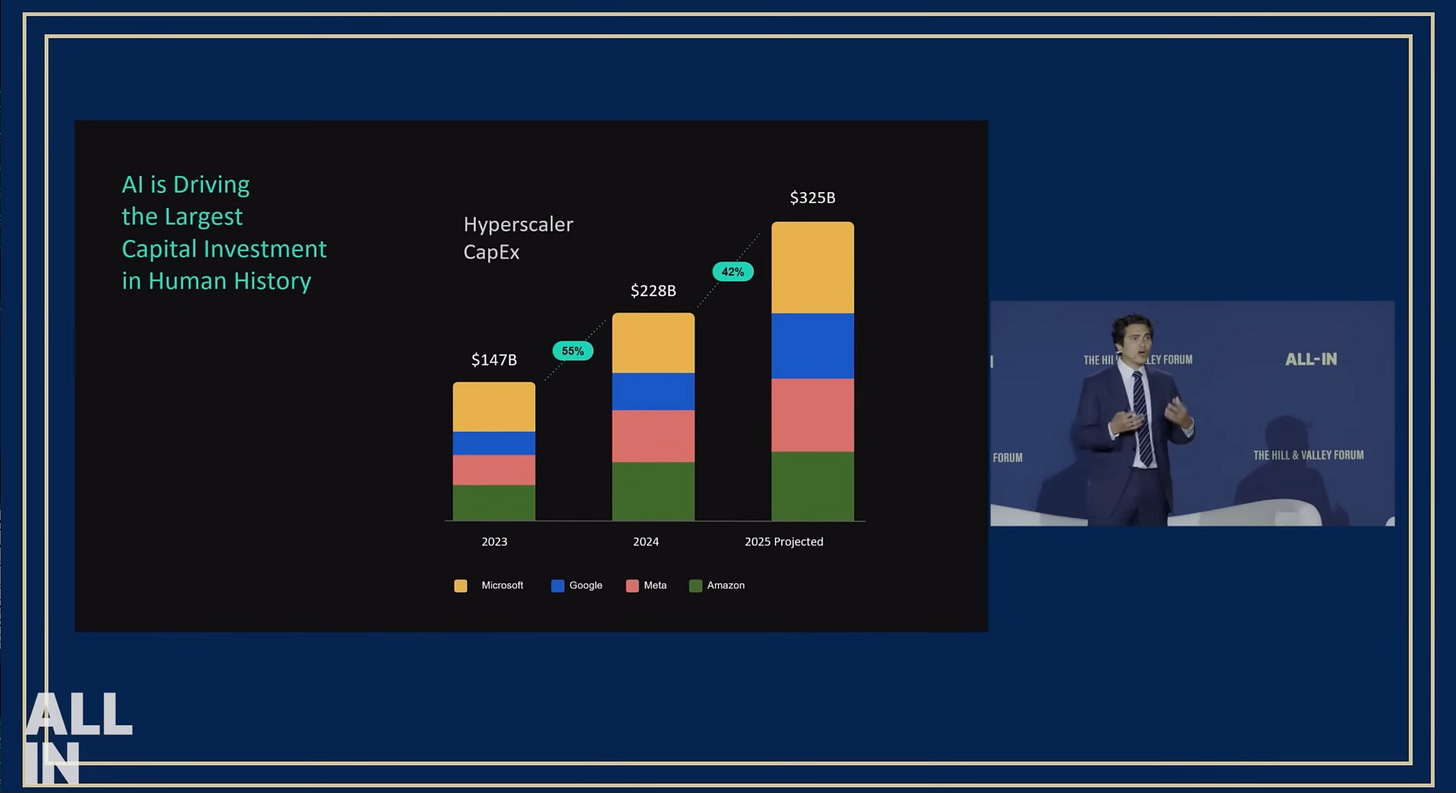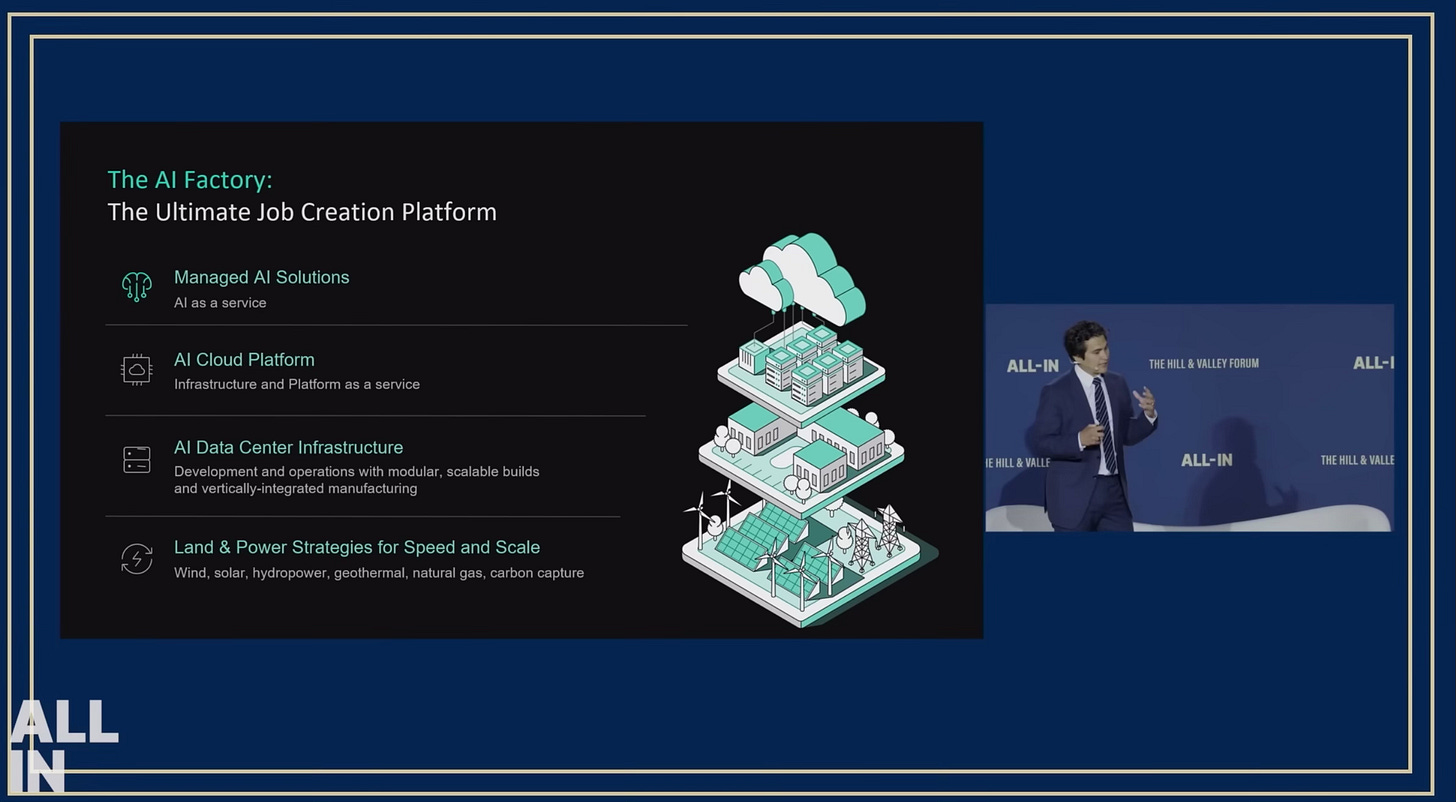🟠What Caught My Attention Last Week
Curated insights on what I saw last week as it relates to Intelligent Products.
The convergence is getting real. Infrastructure, regulation, design, and behavior are all pulling AI out of the lab and into every product decisions from code to chips to customers.
Artificial Intelligence
MIT study warned overusing AI like ChatGPT can dull critical thinking, called “metacognitive laziness.”
AI should spark ideas, not replace them. For Builders, design prompts that ask users to refine outputs, like “What’s your take?” and Users, always verify outputs, don’t just take outputs for use without understanding and verification.On July 23 the White House released an AI plan fast‑tracking data center builds and exports
This matters because product teams must now align architecture decisions with policy
Use case: selecting hosting regions based on federal permit speed
Nvidia and AMD CEOs publicly backed the plan, seeing deregulation and exports as growth enablers
Intelligent products can depend on freer supply chains and chip access.
OpenAI and Oracle are expanding Stargate data‑center capacity by 4.5 GW. OpenAI’s Oracle Stargate deal isn’t just IT strategy, it signals that owning scale and performance at global compute layers becomes part of product strategy. If you’re building intelligence products, your strategy must include visibility into infrastructure decisions and dependencies.
Business Intelligence
Lowe’s uses AI to track in‑store foot traffic and social signals to predict demand (e.g. hurricane gear or trending plants) and adjust inventory and layout in days not months. Real‑time BI connecting merchandising, logistics, and marketing is now possible. For product teams: turn insight loops into actionable decisions in real‑time, not retrospectives.
AWS opened its AI Agent Marketplace with hundreds of deployable agents
This matters because BI solutions now includes plug‑and‑play agents instead of built‑from‑scratch bots
Use case: integrating a support agent from marketplace into your product workflows will become seamless.
TechRadar published a hands‑on review of 70+ AI tools in chat, image, workflow and marketing. They compare ChatGPT‑4o, Gemini, Grok, imaging platforms, assistive writing tools. It’s a reminder: BI reviewers should test tools across multiple axes and contexts, not just pick the biggest brand. Use frameworks for evaluation ease, precision, integration.
Customer Intelligence
Gallup reported 40% of U.S. workers use AI, especially in customer service for faster responses.
With customer‑facing bots now classified as high‑risk under the EU AI Act effective August 2, 2025, firms must bake in transparent disclosures, audit logs, governance APIs, human override paths. Missing that window can trigger fines up to €35M or 7% of global revenue. Customer intelligence design must now include legal and governance from day one.
On July 24 Walmart rolled out four AI “super agents” for shoppers, staff, suppliers and developers
This simplified AI interactions across roles under unified interfaces
Use case: “Sparky” handles shopping, reorders and event planning in one chat
Dine Brands announced AI tools for 3,500+ Applebee’s and IHOP locations, using AI cameras to monitor service speed and personalize promotions.
Customer intelligence is about understanding people’s needs in real time. For intelligent products, this means designing tools that anticipate customer needs while respecting boundaries.
Data Design & Data Intelligence
Reports reveal over 4,000 AI‑generated fake‑news sites gaming search algorithms
This shows the importance of lineage tracking and verification in data pipelines. Data quality is a foundation for trust, fake or bad quality data, will always bring about a bad result (Garbage in = Garbage out). As part of your raw data ingestion, always ensure you are bringing data from a trusted source.
Research shows AI models are vulnerable to human persuasion tricks (e.g. scarcity prompts)
Important for intelligent products: guard models with adversarial testing and behavioral analysis.
Physical Intelligence
NVIDIA’s acquisition of Canadian AI firm CentL signals deeper hardware integration in AI strategy
For intelligent products this means closer coupling of chip and model design
Meta announced a Manhattan‑size data center for smart glasses AI cloud-backed device compute. This matters because intelligent wearables now rely on dedicated infrastructure. Wearables are the future of device and are a threat to handheld phones.
CEO of Nvidia mentioned a physical AI revolution in the future, where everything that moves will eventually become autonomous, with companies needing both machine (physical) and AI(brain) factories.
Others
My take
What does all this mean?
It means we’re no longer building “AI features.” We’re building AI systems, systems that can decide, and act. AI is now becoming operational.
For builders and product leaders, the bar is moving. You can’t just “use a model.” You need to design for adaptation, and autonomy.
The line between physical and digital is fading.
Wearables will challenge smartphones. Embedded agents will challenge apps. And product thinking must now stretch across UI, logic, policy, and hardware.
This space is moving fast.
There is a rise of a new nervous system of work, commerce, and life. Let’s do it with clarity, trust, and respect.



